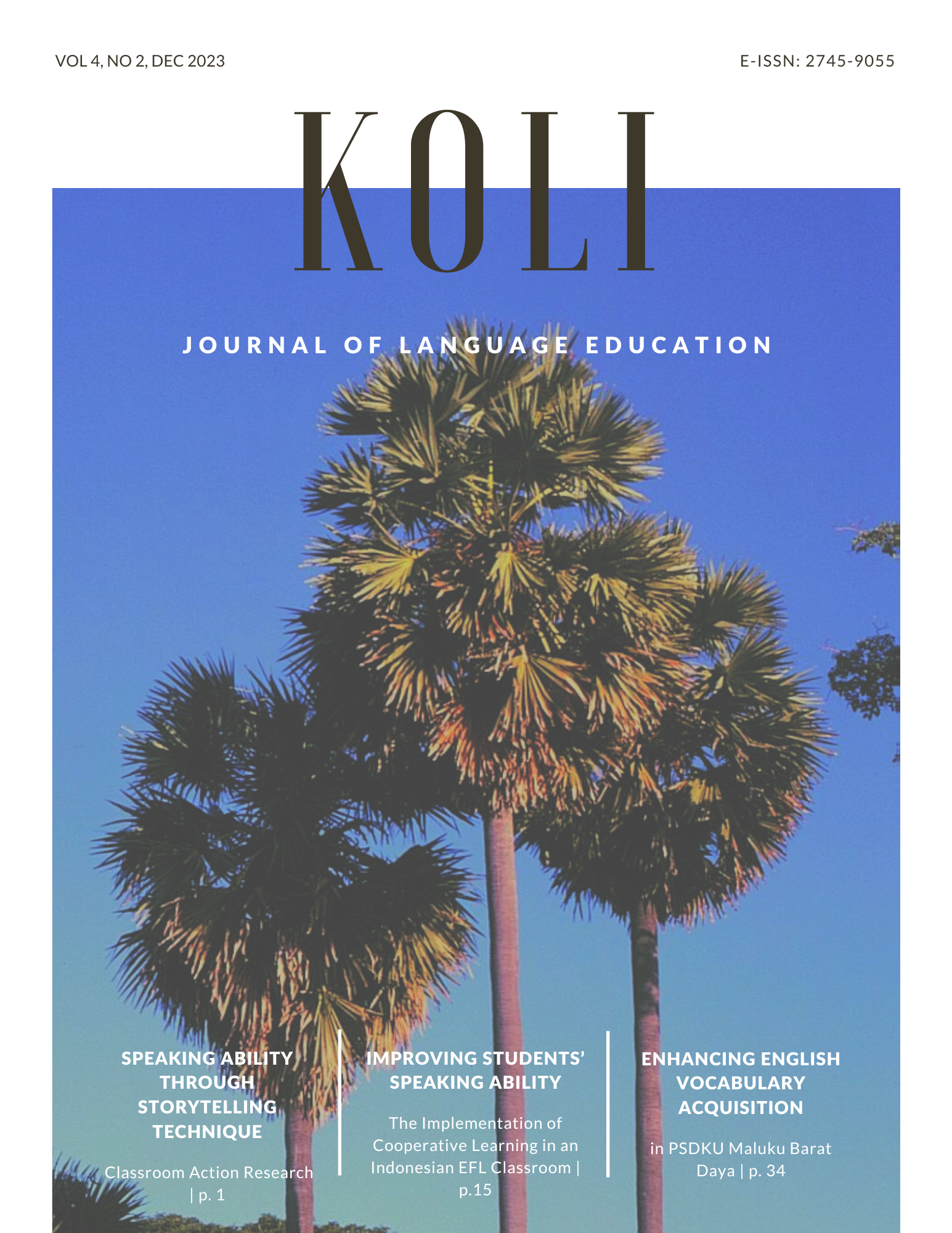Analysis On Validity and Reliability of The Reading Test at SMA Level in Maluku Barat Daya
Abstract
This research aims to determine whether the reading test made by the teacher was in accordance with content validity and reliability. To determine the content validity and reliability the researcher compares English test with the syllabus and lesson plan and students’ test scores. This study used a descriptive qualitative method by using document analysis in the form of end- semester (summative test) and an interview with the teacher. This research collected data from two English teachers who teach at the second level at SMA NEGERI 13 MBD and SMA NEGERI 9 MBD. The results show that there are 20 questions of multiple choice about Reading, and from the questions, the researcher found that 17 questions were categorized by content validity, namely according to the syllabus and lesson plan. While 3 questions were categorized as not by the content validity. Based on the students’ scores from the reading tests, the researcher found that the same tests given to the different students in the second level and at different times, the scores were reliable, than can be said the reading tests made by the teachers were valid and reliable. From the results of the interview, it can be concluded that the teachers made a grid of questions before making the test. Tests made by the teachers must be related to the syllabus and lesson plan, and according to the level of student ability. This shows that most of the English tests are made by the teachers according to content validity and reliability.
Downloads
Copyright (c) 2023 The Author(s)

This work is licensed under a Creative Commons Attribution-NonCommercial-ShareAlike 4.0 International License.











